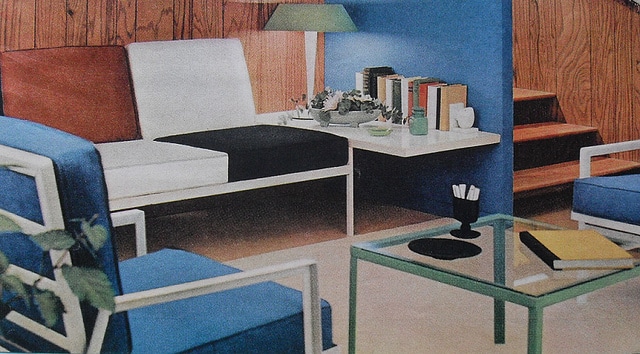Essential Tips for Integrating Minimalism right into Your Personal and Professional Life
Essential Tips for Integrating Minimalism right into Your Personal and Professional Life
Blog Article
Comprehending Minimalism: Strategies for Decreasing Mess and Enhancing Clearness in Everyday Living
Minimalism is increasingly recognized as a practical technique to improving clearness and focus in today's chaotic globe. By systematically assessing our possessions and prioritizing intentionality, we can develop rooms that not just mirror our values yet likewise advertise psychological health. Using approaches such as the "Four-Box" technique can facilitate a more organized environment, yet real difficulty lies in cultivating a minimal attitude that sustains these efforts. Discovering the nuances of this viewpoint may reveal unexpected insights into exactly how you can transform your day-to-day life. What might you find when you embrace this deliberate simplicity?
Specifying Minimalism and Its Benefits
Specifying minimalism entails comprehending it as a lifestyle option that emphasizes simplicity and intentionality in both physical belongings and day-to-day routines. At its core, minimalism encourages individuals to prioritize what really matters, enabling a more purposeful and focused existence. By stripping away the non-essential, minimalism welcomes individuals to involve deeply with their environments and experiences.
It fosters mental clearness, as decreasing mess in one's setting can lead to lowered interruptions and stress. Minimalism advertises financial flexibility; by focusing on requirements over wants, individuals can make even more informed acquiring decisions, leading to potential savings and minimized debt.
Inevitably, minimalism is not simply about worldly decrease but involves an all natural shift in point of view, fostering a life characterized by fulfillment, purpose, and balance. Embracing this lifestyle can bring about profound modifications in how individuals engage and perceive with the globe around them.
Assessing Your Present Clutter
Clutter often manifests as a frustrating accumulation of products that no longer serve an objective, developing a barrier to accomplishing a minimal way of living. Take note of particular categories of things, such as garments, publications, or kitchenware, as this will certainly help you recognize the range of the clutter.

Additionally, take into consideration the regularity of use for each product. Inevitably, recognizing your existing clutter is a vital step toward accepting minimalism and improving clearness in your day-to-day living.
Practical Decluttering Methods
Having assessed your existing mess, the following action is to apply sensible decluttering strategies that assist in an even more arranged living area. Minimalism. One efficient approach is the "Four-Box" strategy, where you assign 4 boxes labeled: maintain, give away, garbage, and relocate. This approach motivates quick decision-making and ensures things are classified appropriately
Another method is the "One in, One out" rule, which states that for every new thing acquired, an existing thing should be removed. This concept aids preserve balance and stops buildup in time. In addition, consider the "30-Day Minimalism Video Game," where why not check here you eliminate one item on the first day, 2 on the second, etc, cumulatively promoting a sense of accomplishment.
For those who fight with emotional attachments check my blog to possessions, the "Emotional Value" method can be advantageous. Limitation yourself to a details variety of valued products, allowing you to value their importance without frustrating your space. Last but not least, establish a routine decluttering timetable, whether month-to-month or seasonally, to preserve a clutter-free setting. By using these methods, you can produce a much more efficient and tranquil home, eventually enhancing quality in your daily life.
Developing Deliberate Spaces
Developing intentional rooms involves a thoughtful method to exactly how we style and arrange our settings, making sure each area offers a particular function and reflects our worths. This method is vital in growing a sense of quality and objective in our day-to-days live. By critically analyzing the feature of each room, we can eliminate distractions and improve our overall well-being.
To develop willful rooms, start by identifying the primary activities that will certainly occur in each location. As an example, an office ought to be developed to cultivate performance, integrating components such as ample lighting, comfortable furniture, and marginal interruptions. In comparison, a leisure location need to advertise serenity, featuring soothing shades and comfortable seats.
Furthermore, take into consideration the emotional impact of your surroundings (Minimalism). Integrating personal things that reverberate with your worths, such as art work or plants, can improve the link to your space. Consistently evaluate these settings to ensure they proceed to serve their desired objective as your requirements progress
Inevitably, producing willful rooms is about making conscious options that line up with your lifestyle, promoting harmony and efficiency in your living and functioning settings.
Preserving a Minimalist State Of Mind
Welcoming go now a minimalist frame of mind calls for recurring representation and intentionality in our thoughts and actions. This technique entails cultivating understanding of our worths and priorities, permitting us to filter interruptions and concentrate on what really matters. To maintain this attitude, regular self-assessment is crucial. Reserve time to review your dedications, properties, and also digital material, ensuring they align with your core principles.
One more secret method is to exercise gratefulness. Acknowledging what you already possess fosters contentment and decreases the wish for unwanted. This shift in point of view motivates appreciation for simplicity, boosting overall well-being. Integrating mindfulness techniques, such as reflection or journaling, can additionally strengthen a minimalist attitude by promoting clarity and reducing mental mess.
Additionally, develop borders to safeguard your time and energy. Find out to state no to non-essential commitments and diversions that do not add to your individual development. Border yourself with similar people who sustain your minimal trip, as shared worths can boost motivation and responsibility.
Verdict
In verdict, welcoming minimalism offers substantial advantages, consisting of reduced clutter and improved clearness in daily life. The principles of minimalism offer as useful devices for cultivating an environment that supports individual growth and health.

Furthermore, take into consideration the "30-Day Minimalism Game," where you get rid of one thing on the first day, two on the 2nd, and so forth, cumulatively cultivating a feeling of accomplishment.
In verdict, welcoming minimalism provides substantial advantages, including lowered clutter and boosted clearness in everyday life.
Report this page